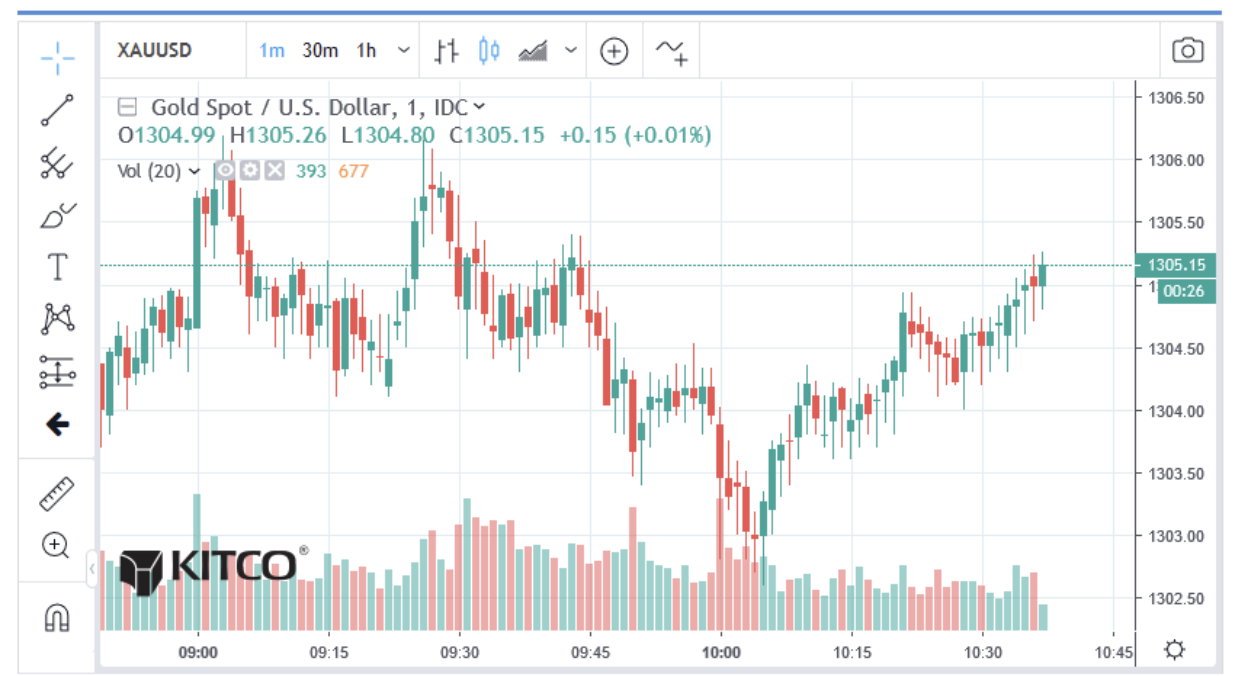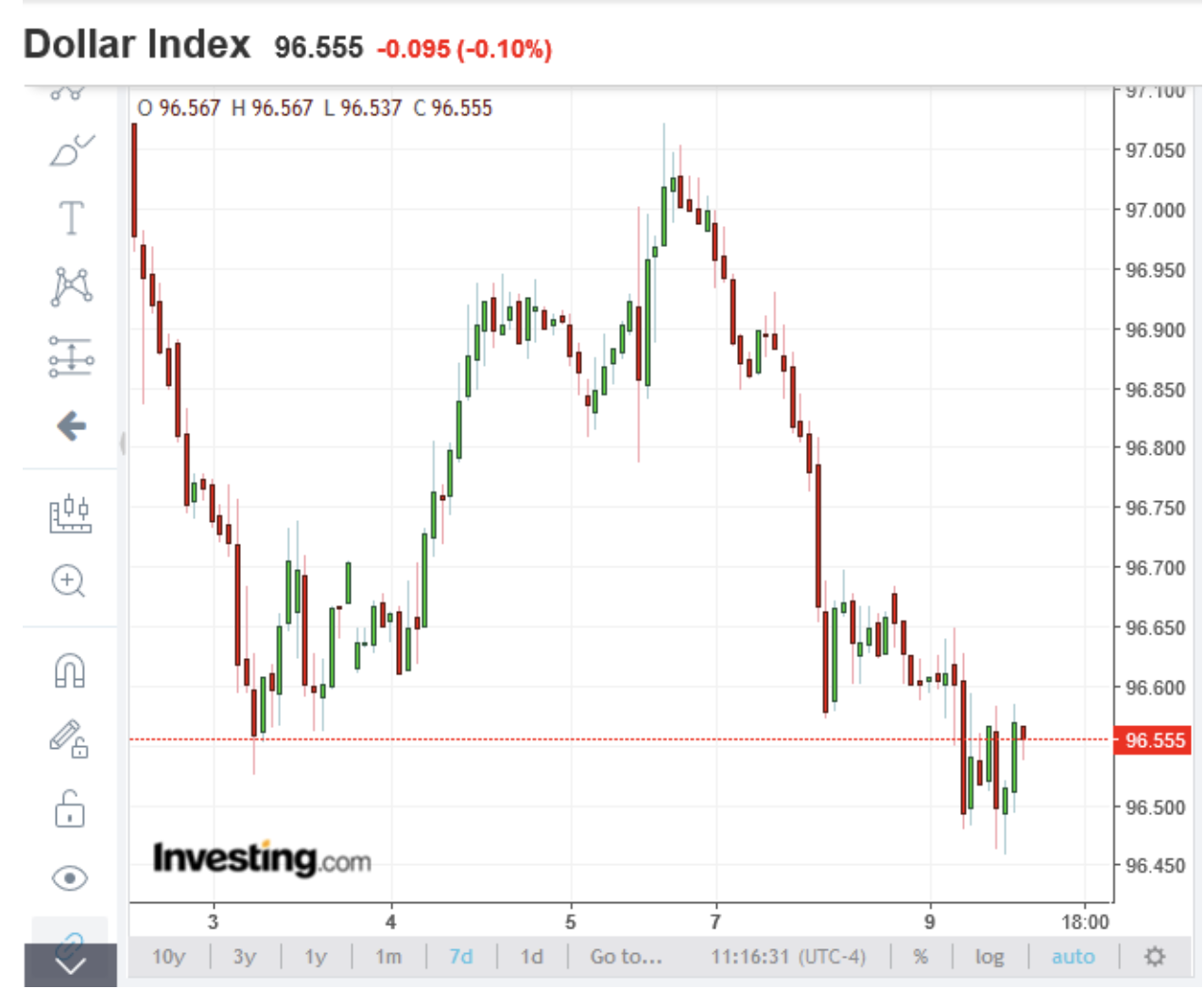Gold is treading water, holding just above $1,300 per ounce for the second day in a row, buoyed by an IMF downgrade of the global economy as well as a weaker dollar.
In its latest forecast, the IMF sees the global economy growing at 3.3 percent in the current year from an earlier forecast of 3.5 percent, while U.S. growth is expected to clock in at 2.3 percent from the previous forecast of 2.5 percent.
Other domestic forecasts were equally downbeat, with the international lender saying it expects growth in the Eurozone to clock in at an anemic 1.3 percent this year from an earlier estimate of 1.6 percent while Canada’s growth is expected to come in at 1.5 percent from a prior forecast of 1.9 percent.
The only upward revision was for China, with the fund slightly increased its growth projection from 6.2 percent to 6.3 percent. China managed to rack up better-than-feared manufacturing data for the month of March, proving the ongoing trade war might not be as damaging to the country as earlier thought.
June gold futures GCM9 had gained half a percentage point by the Tuesday mid-morning session to trade at $1,308.10. That marked the second day the contract has finished above $1,300 in 10 days and the highest settlement for a most-active contract since March 27. Analysts mostly expected the downgrades, hence the muted reactions by financial markets.

(Click to enlarge)
Source: Kitco
Perhaps the only real bright spot in the report is that growth prospects are likely to pick up during the latter half of the year.
Nevertheless, the fund has cautioned that risks remain tilted to the downside mainly due to growing geopolitical uncertainty including ongoing trade disputes.
There’s an uneasy trade truce between the U.S. and China and there are fears tensions could flare up again. Further, the U.S. a few days ago announced plans to institute wide-ranging tariffs on EU products over an unresolved dispute on aviation subsidies. This could easily play out in other sectors such as the auto industry and disrupt global supply chains.
Related: Wal-Mart To Roll Out Robots In Hundreds Of U.S. Stores The IMF has also reiterated its earlier concerns regarding high levels of debt both in public- and private sectors. Uncontrolled debt levels even in relatively small pockets of the economy can significantly exacerbate market risk and even trigger massive crashes as the world learned from the Lehman Brothers’ crisis. It’s the reason why the organization has warned that the potential for a sharp deterioration in market sentiment that would imply a reallocation of capital away from risk assets such stocks as well as wider spreads over safe-haven securities such as gold remains high.
The general outlook could, therefore, be positive for gold. It’s also a grim reminder that an ongoing reversal in market sentiment is based largely on actions by central banks and not a turn in the real economy.
Gold’s bull thesis is certainly getting support from a weakening greenback, too. The US Dollar Index (DXY) has been facing considerable resistance as a bout of selling pressure continues to drag the currency down.

(Click to enlarge)
Source: Investing.com
The risk-off sentiment that’s supporting safe haven assets is the same factor that’s putting the buck under downside pressure. Gold tends to be strongly inversely correlated with the US dollar so this is a virtuous cycle in gold’s favor.
Related: Chinese Appetite For Gold Approaching Record Levels
The fence-sitting that has been going on is likely to be a calm before the storm.
The current week is heavily loaded towards the backend--Wednesday’s itinerary is choc-a-bloc with action with an ECB meeting, emergency EU Brexit summit and Fed minutes. Later in the week earnings season will kick off in earnest while the we will get to know the UK’s fate. Meanwhile, the broader macro stories are being drowned out yet they continue being as potent as ever. Although there seems to be a renewed desire to get the US/China deal over the line, there’s little indication that anything concrete will be agreed upon any time soon.
In other words, there’s no shortage of potentially strong drivers that can take the precious metal in either direction. Nevertheless, gold is likely to remain vulnerable until it breaks back above $1,325—and even then it might take a real good scare to make the bears fall fully behind a good rally.
By Alex Kimani for Safehaven.com
More Top Reads From Safehaven.com

















